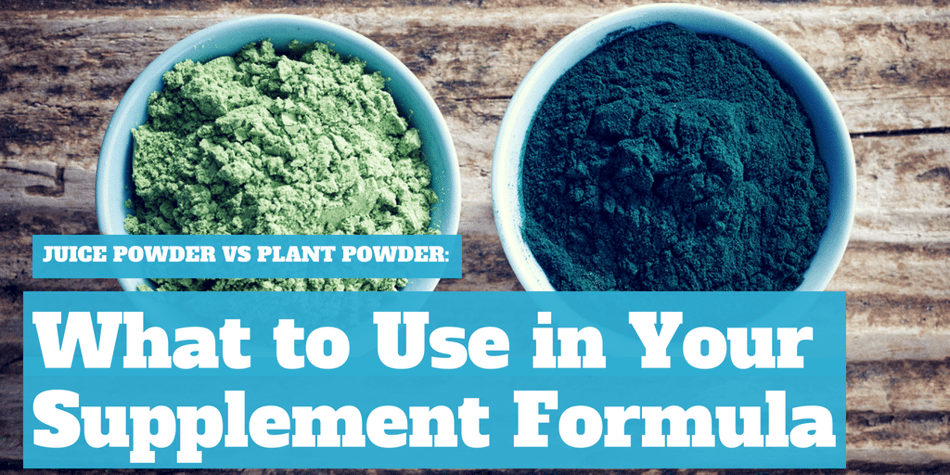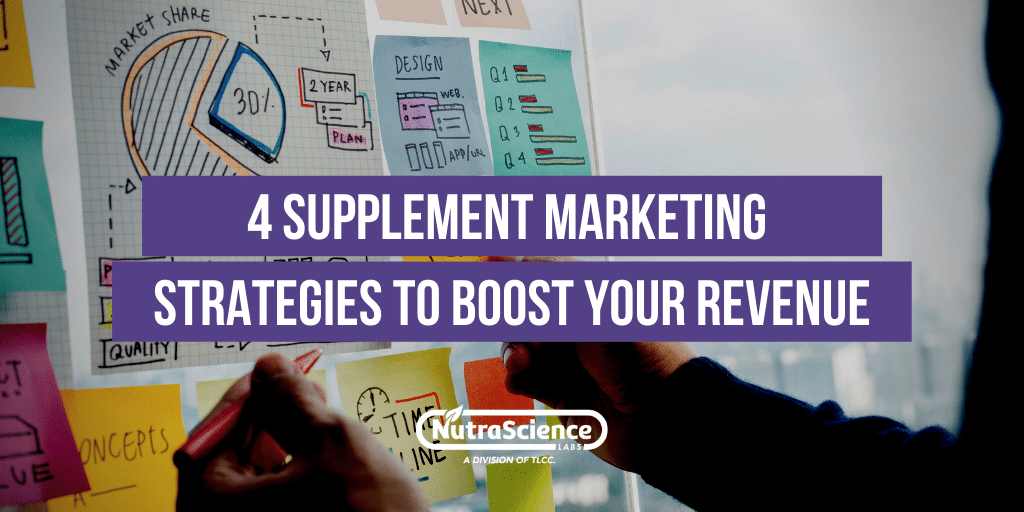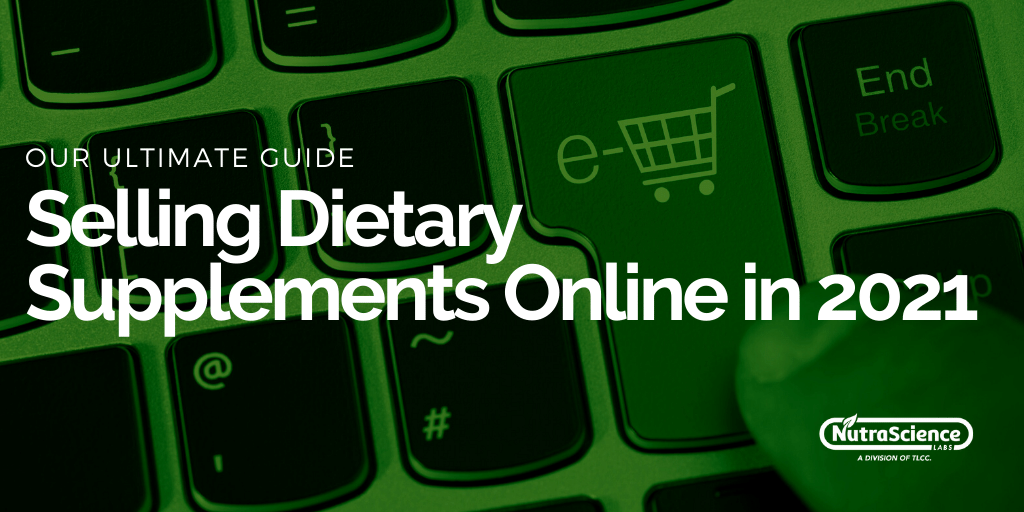Juice Powder Vs. Plant Powder: What to Use in Your Supplement Formula?
Let’s say that you’re a dietary supplement brand owner looking to round out your latest tablet, capsule, or powder formulation. The next ingredient that you’re looking to add (which happens to be an important one) is available as a juice powder and as a whole powder. Which one will you choose? Better yet, which one should you choose? Over the last few decades, juice powders and whole plant powders have seen a significant boost in popularity, thanks largely in part to the consumer-led push for “cleaner,” whole food-based products. As more and more supplements look to include berry, fruit, vegetable, and wheat ingredients that are available in both powdered forms, it’s important for decision-makers to be able to recognize the key differences between a juice powder and a whole plant powder.
Juice Powder vs. Whole Plant Powder: The Fundamental Difference
As their names suggest, there is one fundamental difference separating juice powders from whole plant powders. At their simplest, whole powders require that the entirety of an ingredient (or, at the very least, all its edible and viable components) be finely ground then dehydrated into a powder. Similarly, juice powders call for the same grinding process. The difference is that this grinding process is then followed by a second process that filters out and discards all the fibrous, pulpy, plant materials – leaving just the juice, which is then dehydrated into a powder.
Juice Powder vs. Whole Plant Powder: Nutritional Value
When it comes to nutritional content, the differences between a juice powder and a whole plant powder can be significant. Let’s look at a real-world example: wheatgrass.
Wheatgrass Powder vs. Wheatgrass Juice Powder
Wheatgrass juice powder and wheatgrass powder have notably different nutritional/phytochemical profiles. While a wheatgrass powder can have nearly 4 times more fiber than wheatgrass juice powder, the juice powder will typically have more (and in some cases, significantly more) amounts of vitamins A and E, calcium, and other nutrients.
In fact, these numbers have shown that when compared to wheatgrass powder, wheatgrass juice powder will typically have:
- More vitamin A and vitamin E
- As much as 11 times more calcium
- Nearly double the iron
- Almost 4 times the chlorophyll
- Up to 42 times more superoxide dismutase (SOD)
Now, the fact that wheatgrass juice powder typically has higher concentrations of certain nutrients than wheatgrass powder doesn’t mean that wheatgrass powder is ineffective. On the contrary, numerous studies have demonstrated the benefits of the ingredient, including one published in the Journal of Alternative and Complementary Medicine, which demonstrated that 1,000 mg/day of wheatgrass powder was effective in reducing oxidative stress and increasing total antioxidant status.[i]
What are the Health Benefits of Wheatgrass Powder and Wheatgrass Juice Powder?
Wheatgrass powder and wheatgrass juice powder have many health benefits. Wheatgrass is an excellent source of many different vitamins and minerals such as vitamins A, C, E, iron, magnesium, calcium, and amino acids.
Wheatgrass powder contains 17 amino acids, 8 of which are essential amino acids. It also consists of chlorophyll, a type of green plant pigment with several health benefits like helping reduce inflammation. It also contains several antioxidants such as glutathione and vitamins C and E, which reduce oxidative stress.[ii]
According to some animal studies, wheatgrass may also assist in managing blood sugar levels. Wheatgrass powders containing thylakoids can also be used in greens smoothies that promote healthy weight management.
Concentrations, Quality & Efficacy
No matter what type of ingredient you’re looking for in either powder or juice powder form, the key to finding the best fit for your product’s formulation is recognizing which variation(s) will best be able to:
- Meet your formulation’s nutritional goals. Depending on the intended purpose of your product, there may be an obvious choice. Then again, there may not be. Lab tests and additional research can be incredibly useful when it comes to answering this question.
- Meet your target customer’s demands. Ideally, answering the first question should help you answer this one. At the end of the day, your product and its formulation should meet your customers' needs.
- Work within your budget. As with anything, cost is always a factor worth considering. Generally speaking, a juice powder option will be more expensive than a whole powder option (but, again, this isn’t necessarily true for every ingredient).
Along with answering these questions and others like them, it is absolutely worth recognizing the fact that depending on how a raw ingredient is processed; there can be noteworthy variations in the concentration levels of key nutrients – regardless of whether or not the ingredient is distilled into a juice powder or a whole plant powder.
A perfect example of this? The humble cranberry. Cranberry juice powder, cranberry concentrate powder, and cranberry powder can be anywhere on the map with regards to their content of proanthocyanidins (aka PACs-- key phytochemical components which have been recognized as antioxidants and promoters of heart health). Some variations provide 0.5% PACs while others provide 3.5% PACs.
And highly standardized extracts? They can provide as much as 50% PACs! What’s the moral of our tart anecdote? Having raw materials tested for purity, efficacy, and nutrient concentrations is a must for those looking to help ensure their products are consistently of high quality.
Choosing the Best Ingredients
At the end of the day, the answer to the question “Which is better, a juice powder or a whole plant powder” is anything but simple. It doesn’t take very long for it to become clear that the only way to find the best option for any product is to put in the time, research, and effort.
References
[i] Shyam R, Singh SN, Vats P, et al. Wheat grass supplementation decreases oxidative stress in healthy subjects: a comparative study with spirulina. J Altern Complement Med. 2007;8:789-91
[ii] https://www.healthline.com/nutrition/wheatgrass-benefits#TOC_TITLE_HDR_6









